Institute Location and Field Trips around the San Francisco Bay Area
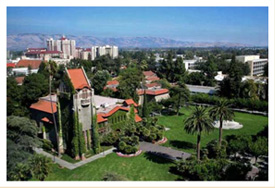 The institute is held at San José State University, California’s oldest institution of public higher education.
The institute is held at San José State University, California’s oldest institution of public higher education.The institute is held at San José State University, California’s oldest institution of public higher education. SJSU’s 154-acre campus sits at the hub of a dynamic urban setting in downtown San José, the nation’s tenth largest city and the capital of “Silicon Valley.” Located at the southern end of the San Francisco Bay Area, San José has a population of roughly one million, making it Northern California’s largest city. Many of California’s most popular national, recreational, and cultural attractions are conveniently close. San Francisco, Berkeley, Stanford University, Santa Cruz, the Monterey Peninsula, redwood forests, and the California coastline are all within an hour’s drive of downtown San José.
The South Bay region also has one of the largest and most ethnically diverse populations of any urban area in the country. Over 36% of Santa Clara County residents, nearly 600,000 people, are foreign born, giving it the highest percentage of foreign-born residents of any county in the state. Approximately 50% of residents in Santa Clara County households speak a language other than English in the home, and the county is in the top 1% of counties nationwide in terms of immigrant diversity.
Most of the institute sessions are held in the performance and classroom spaces at San José State. These facilities are located next door to the eight-story Dr. Martin Luther King, Jr. Library. Opened in August 2003, the library houses over 1.5 million volumes, seats more than 3,500 people, provides over 40 group study rooms and 300 public access computers, and receives over 2 million visitors annually.
An important dimension of the institute are fieldtrips around the San Francisco Bay Area.
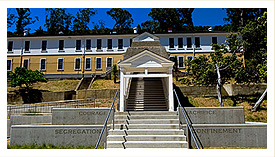 Preserved Angel Island Detainment Center
Preserved Angel Island Detainment CenterA former immigrant processing center located in San Francisco Bay, Angel Island was in operation from 1910 to 1940 and dubbed “the Ellis Island of the Pacific.” Over 500,000 immigrants entered the United States through San Francisco harbor during the first half of the twentieth century. Many would-be immigrants, particularly Chinese, were detained at Angel Island, some for up to two years, while their immigration requests were processed. Scholars will take a tour of Angel Island led by Dr. Judy Yung. Afterward, Scholars have the option of spending the night at a hotel in San Francisco or returning to the hotel in San José.
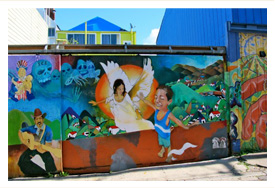 Murals along Balmy Alley in the Mission District
Murals along Balmy Alley in the Mission DistrictDowntown San Francisco: Scholars take a walking tour of downtown San Francisco’s immigration-specific historic sites. The tour provides a survey of Spanish, Mexican, Irish, Italian, and Chinese immigration to San Francisco by taking Scholars through portions of the Mission District, South of Market Street, Union Square, the Financial District, “Chinatown,” and North Beach. Locations visited include Mission Dolores, Mexican murals, St. Patrick’s Church, Grant Avenue and Stockton Street, a fortune cookie factory, a former Chinese mission, Old St. Mary’s Church, Portsmouth Square, Columbus Avenue, Saints Peter & Paul Church, and the Shrine of St. Francis. NEH Scholars have the option of spending the night at a hotel in San Francisco or returning to the hotel in San José.
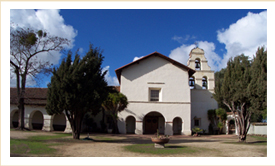 View of the restored Mission San Juan Bautista
View of the restored Mission San Juan BautistaForty-five minutes south of San José, San Juan Bautista is home to one of California’s Spanish missions, as well as to the world-famous El Teatro Campesino, a theatre company founded by Luis Valdez. Institute faculty will discuss immigration in the context of the Spanish mission system, the creation of the state of California, and the history of migration to the state from the 1850s to the present day. There will also be a discussion of Luis Valdez’s work at El Teatro Campesino.
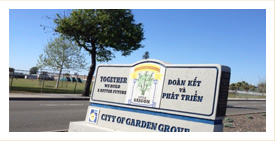 Sign marking entrance to Little Saigon in San
Sign marking entrance to Little Saigon in SanJosé
San José: Scholars take several short fieldtrips to various places in downtown San José, including “Little Saigon” and “Japantown.”



